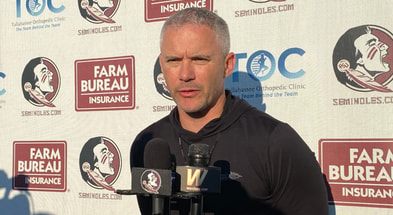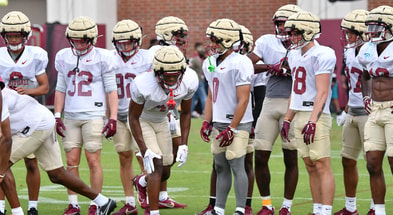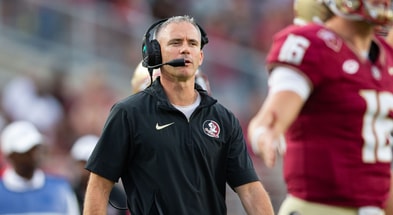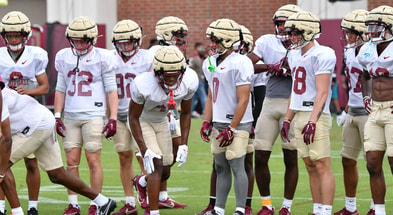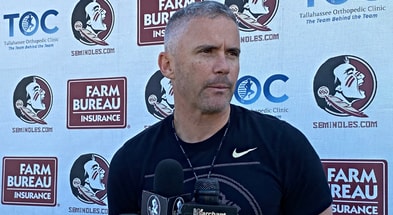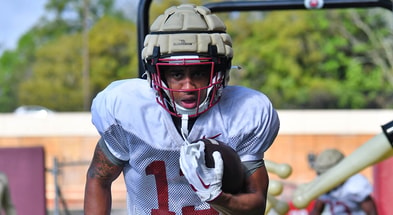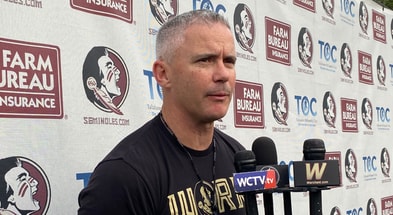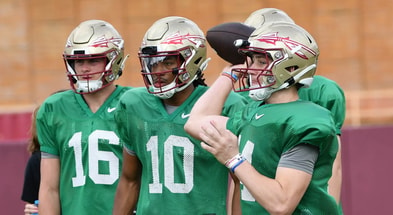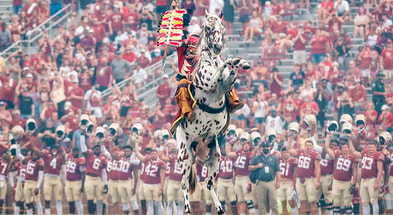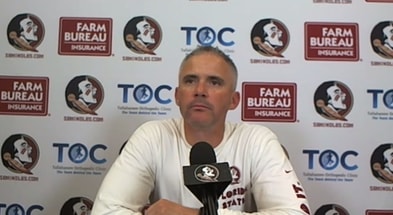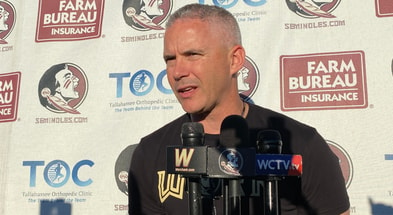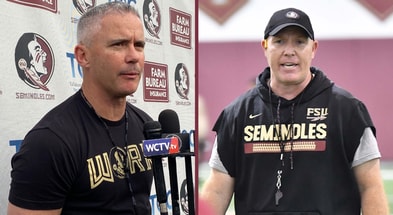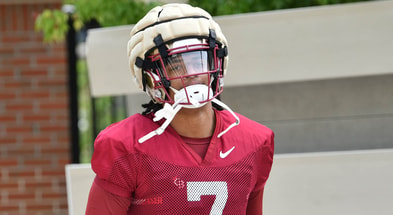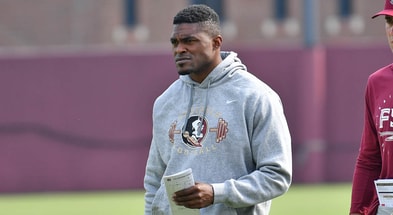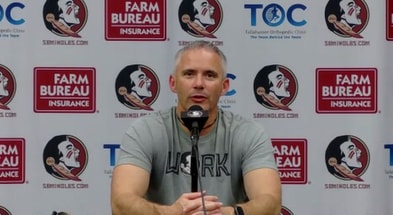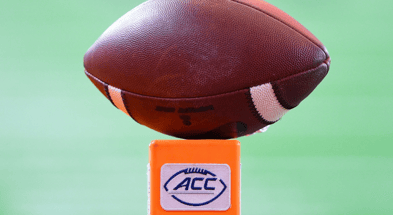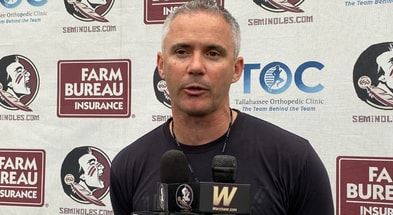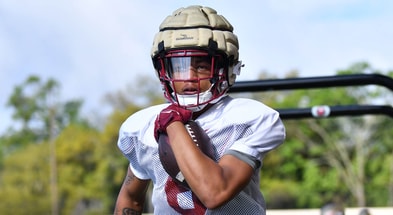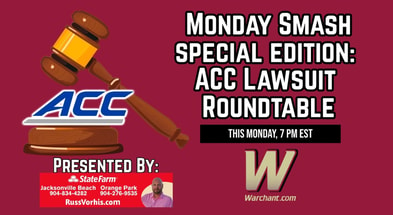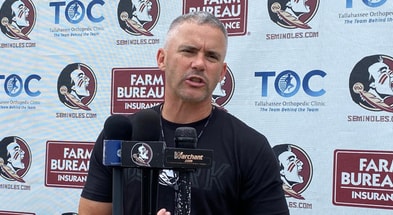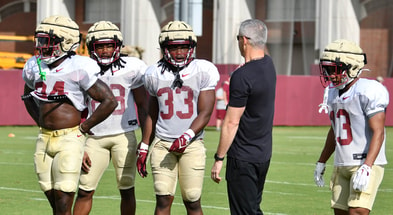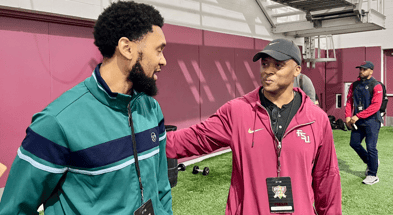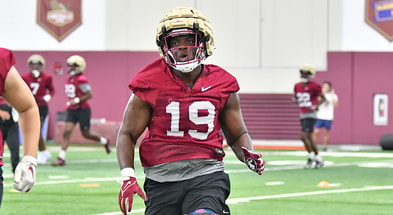'Something has to change' ... Florida State A.D. Michael Alford sounds off on ACC revenue disparity
Two weeks after the ACC held meetings in Charlotte, N.C., to discuss revenue sharing and other topics, Florida State athletics director Michael Alford sounded the alarm Friday about Florida State’s future in the Atlantic Coast Conference.
Speaking at a regularly scheduled meeting of the FSU Board of Trustees, Alford said the Seminoles are in danger of being lapped financially by “competitors and peers” in other conferences.
According to projections for the Big Ten and Southeastern Conference Alford showed the board members, FSU stands to receive about $30 million less than members of those conferences annually.
He said Big Ten schools will receive about $80 million each year from their television contracts, and SEC schools will get about $72 million.
“Right now, when you throw everything in, we receive about $42 million,” Alford said. “That would put us literally $30 million behind our competitors and peers across the country, and that’s $30 million every year.”
Those numbers Alford cited are not new — they have been reported widely over the last year — but it was Alford’s tone and overall message that was surprising. Especially in a public venue.
“We have to do something,” he said. “Because we are a brand, and we’re a very important brand, and we drive the media value in this conference. And we’re consistently talking to the conference … where we’re making sure they understand our value to this conference. But at the end of the day, if something is not done, we cannot be 30 million behind every year compared to our peers.”
After Alford finished his presentation, Board of Trustees chair Peter Collins lamented how difficult it would be for Florida State to compete nationally with the projected revenue disparity.
“It’s almost impossible,” Collins said.
“It’s impossible,” Alford responded.
Another board member asked Alford if a buyout to leave the ACC is “even feasible.”
“That is an excellent question,” FSU general counsel and vice president Carolyn Egan responded.
Egan and Alford then explained it would cost about $120 million for Florida State to leave the ACC today.
That doesn’t take into account the legal maneuvering that it might take to break the ACC’s grant of media rights, which lasts until 2036. And the fact that FSU would need an offer from another conference to leave.
*** Sign up for premium access to Warchant.com and the On3 Network for only $29.99. ***
The Seminoles’ athletics director also said he’s keeping an eye on what happens with other conferences — particularly the Pac-12 and Big 12 — which are looking to expand or shuffle members. He said he is in constant communication with Collins, FSU President Richard McCullough and Egan about the changing landscape.
“We’re in the weeds on everything that will affect the future of FSU revenues … even looking into some of these windows and what windows would be opening up if some of these realignment dominoes were to fall,” he said. “We’re working every day. The president and I are talking daily about our future.”
Repeatedly citing the strong “brand” of Florida State, Alford said the Seminoles generate about 15 percent of the revenue that comes into the ACC through media contracts.
“But we only get 7 percent of the distribution,” he said.
Alford said Florida State and Clemson combine to generate about 24 percent of the conference’s TV revenue.
“We currently represent 70 percent more viewers than the typical ACC school,” Alford said of Florida State. “It speaks to the power of the brand. When that logo is on television, we attract eyeballs.”
Alford, who is early in his second year as Florida State athletics director, said he is waiting to see it the ACC will act on recent discussions about uneven revenue sharing — where schools that invest and bring in the most television revenue will receive larger distributions each year.
As of now, there is no indication if that will happen, and how much it might help in the long term.
“We’re working with the conference right now,” he said. “We’re talking to them how to create a revenue distribution model that takes into factors who you are, how you play, what your brand is, working with other athletic directors with that.
“So, we’re working with the conference. Don’t know if we’re going to get there. Don’t know what the revenue distribution model will make that (difference) up. I know it won’t make that up, but what can it make up? So, they’re working on options.
“But at the end of the day, for Florida State to compete nationally something has to change moving forward.”
Stay connected to Warchant.com for more on this story.
Talk about this story with other die-hard FSU football fans on the Tribal Council.
